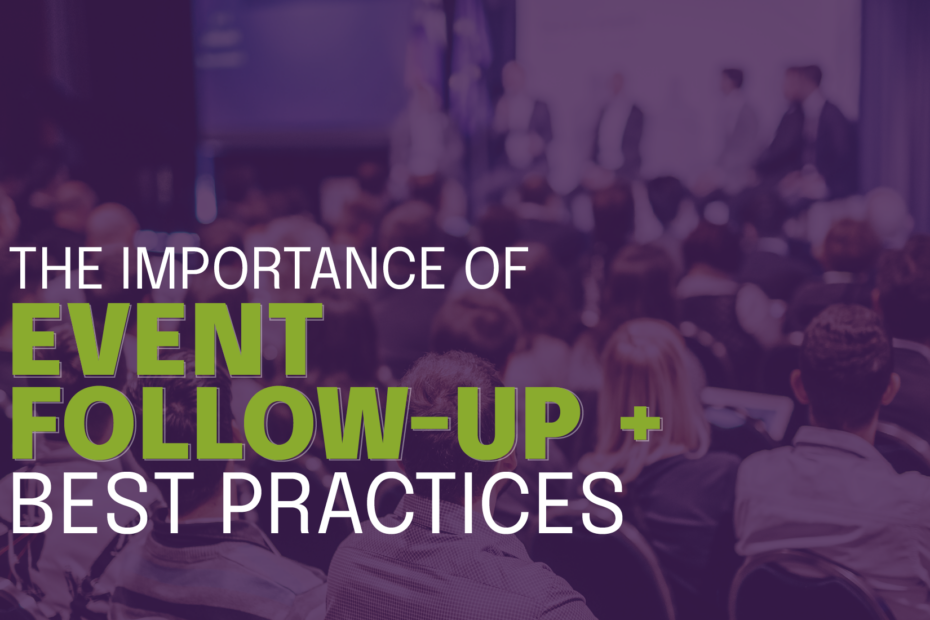Event follow-up is one of the most critical yet often overlooked steps in hosting a successful fundraising event. It’s not just about thanking attendees—it’s about building stronger relationships, learning from feedback, and keeping the momentum alive.
Effective follow-up can feel daunting if your nonprofit’s team is already juggling multiple responsibilities. But with the right strategies, it doesn’t have to be. Let’s explore the importance of event follow-up and discuss actionable best practices to help you make the most of your hard work.
Why Event Follow-Up Matters
Event follow-up provides strategic opportunities for your nonprofit to:
- Strengthen Relationships: By following up with attendees and donors, you demonstrate appreciation and reinforce their decision to support your cause. A simple thank-you can go a long way in building trust and loyalty.
- Maximize ROI: Events take time, energy, and resources. Following up helps you capitalize on the connections made during the event, turning one-time attendees into long-term supporters.
- Collect Valuable Feedback: Post-event feedback offers critical insights into what worked and what you can improve in the future. This information is vital for informing your event planning down the line and ensuring your efforts align with your audience’s expectations.
- Encourage Repeat Participation: Consistent follow-up keeps your organization at the top of supporters’ minds, increasing the likelihood that they will engage with future events, campaigns, or volunteer opportunities.
- Drive Donations and Support: Many attendees feel inspired to give during or immediately after an event. A timely follow-up with a clear call to action (CTA) can help convert that inspiration into meaningful support.
By prioritizing event follow-up, you can nurture relationships, improve your events, and set your organization up for lasting success.
Best Practices for Event Follow-Up
Effective event follow-up doesn’t have to be overwhelming, even for nonprofits with limited resources. With a thoughtful approach, you can maximize the impact of your events and keep attendees engaged long after they’re over. Here are some simple yet powerful best practices to guide your follow-up efforts.
Send a Timely Thank-You Message
A heartfelt thank-you is the foundation of successful event follow-up. Expressing gratitude promptly, ideally within 24-48 hours of your event, ensures your attendees feel valued and appreciated. A personalized message can make a lasting impression—address recipients by name and reference their participation, such as attending the event, donating, or volunteering.
The format of your thank-you matters, too. While email is convenient for reaching a broad audience, handwritten notes can add a personal and memorable touch, especially for major donors. Regardless of the method, make sure your message highlights the impact of their involvement. For instance, share how their contributions helped achieve a specific goal or created a positive outcome for your cause.
Share Event Highlights
Sharing event highlights helps attendees relive the excitement and reinforces their connection to your cause. Use photos, videos, or a brief blog recap to showcase key moments, such as inspiring speeches or milestones achieved.
Share these highlights on social media and your email newsletter, and encourage attendees to spread the word by posting about their own favorite moments. In doing so, you not only celebrate your supporters but also build momentum for their future involvement.
Collect Feedback
Gathering feedback after an event is essential for understanding what worked well and where you can improve for greater results in the future. Send attendees a short, focused survey to show that you value their input and care about creating better experiences for them.
Keep your survey simple—ask about key aspects like the registration process, venue, activities, and overall satisfaction. Include open-ended questions for additional insights, but don’t overwhelm respondents with too many questions. Tools like Google Forms or survey platforms can simplify this process.
While it may not be feasible to implement every piece of feedback you receive, look for commonalities in survey responses to identify which changes to prioritize. Then, share the improvements you make with attendees to demonstrate that you’re actually acting on their feedback.
Update Your Database
Accurate, up-to-date records are critical for understanding your supporters and maintaining strong relationships with them. After an event, update your database with new information gathered from attendees, such as updated contact details.
Add notes about each attendee’s participation, like their donation amount, volunteer role, or specific interests expressed. This data helps you tailor future communications and ensures your outreach feels personal and relevant to each recipient. If you’re using a CRM or donor management software, take advantage of its features to streamline this process and avoid losing valuable information during manual data entry.
Provide Next Steps
Beyond simply thanking your attendees, encourage them to stay involved by providing clear next steps for them to follow. Whether it’s inviting them to your next event or asking them to subscribe to your text contact list, a well-defined CTA allows you to maintain your event’s momentum.
When crafting your message, make the next step easy and specific. For example, include a link to register for an upcoming event or sign up for a volunteer role. Be sure to tie the CTA to the impact attendees can have, showing how their continued support helps further your mission.
By offering actionable ways to stay connected, you turn one-time attendees into long-term supporters who are actively engaged with your organization’s goals.
Event follow-up is more than a nice-to-have—it’s a vital step in building lasting relationships and maximizing the impact of your hard work. As you implement these follow-up strategies, you’ll not only strengthen connections with your supporters but also set your organization up for greater success in future events and fundraising efforts. Start small, stay consistent, and watch your engagement grow!
Author: Daria Knupp, CEM, is the Senior Content Marketing Manager at A2Z Events by Personify. She has spent most of her career in the association world handling content creation and digital marketing and recently decided to apply her expertise to the events industry.
